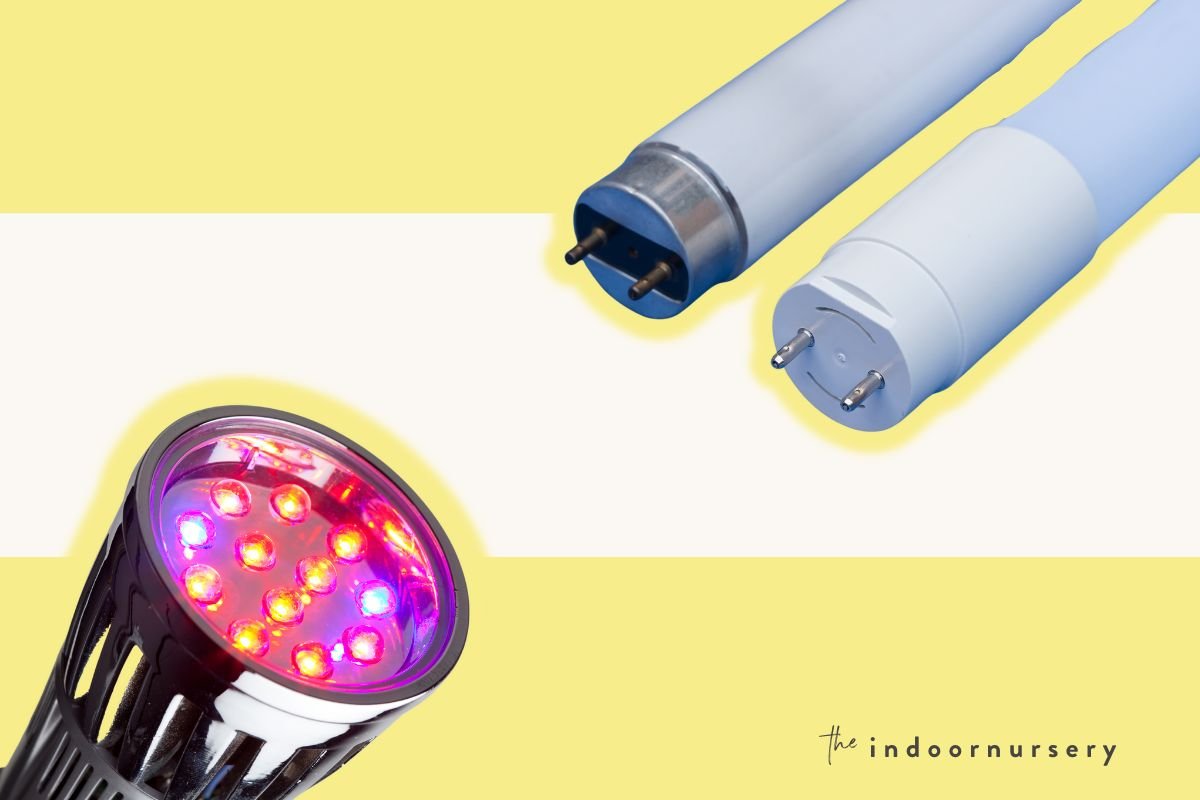When you’re setting up lights for your indoor plants, you’ll find there are many options for bulbs to choose from, including different brands, power levels, and bulb types. If you’re trying to decide between LED and fluorescent lights, one or another of the differences between these two types of bulbs will likely affect your choice.
led vs fluorescent grow lights: what’s the difference?
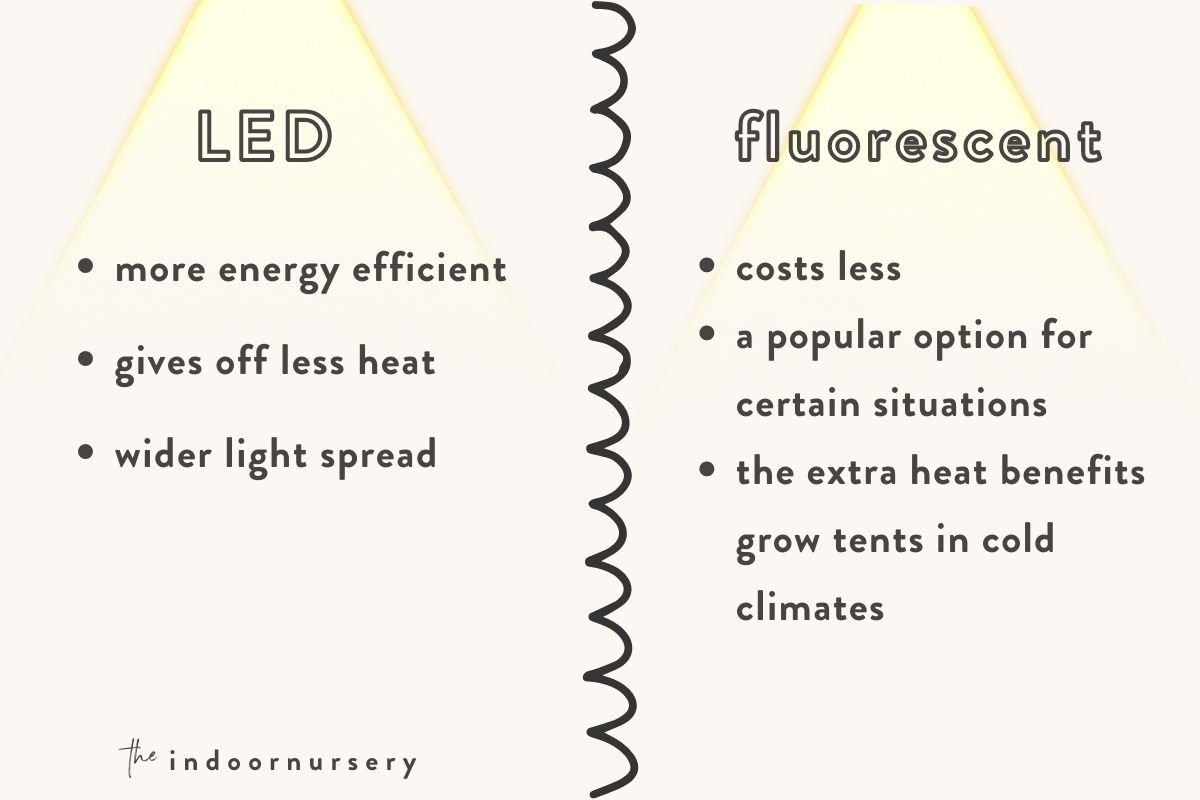
When choosing a grow light, each type of bulb has its pros and cons, and your particular need plays a role in the decision. In general, LEDs are more widespread these days, but fluorescent lights are still a popular option in certain situations. While LEDs are more energy efficient and have a wider light spread, they cost more than fluorescent bulbs.
LEDs give off less heat than fluorescent lights, but in cold climates, the extra heat might be useful, especially in a grow tent. In living rooms, however, LEDs or fluorescents with warm, full-spectrum light will be more comfortable than bright white or purple lamps. Here, we’ll look more closely at the characteristics of each type of light so you can make the best choice for your grow light setup.
what are led grow lights?
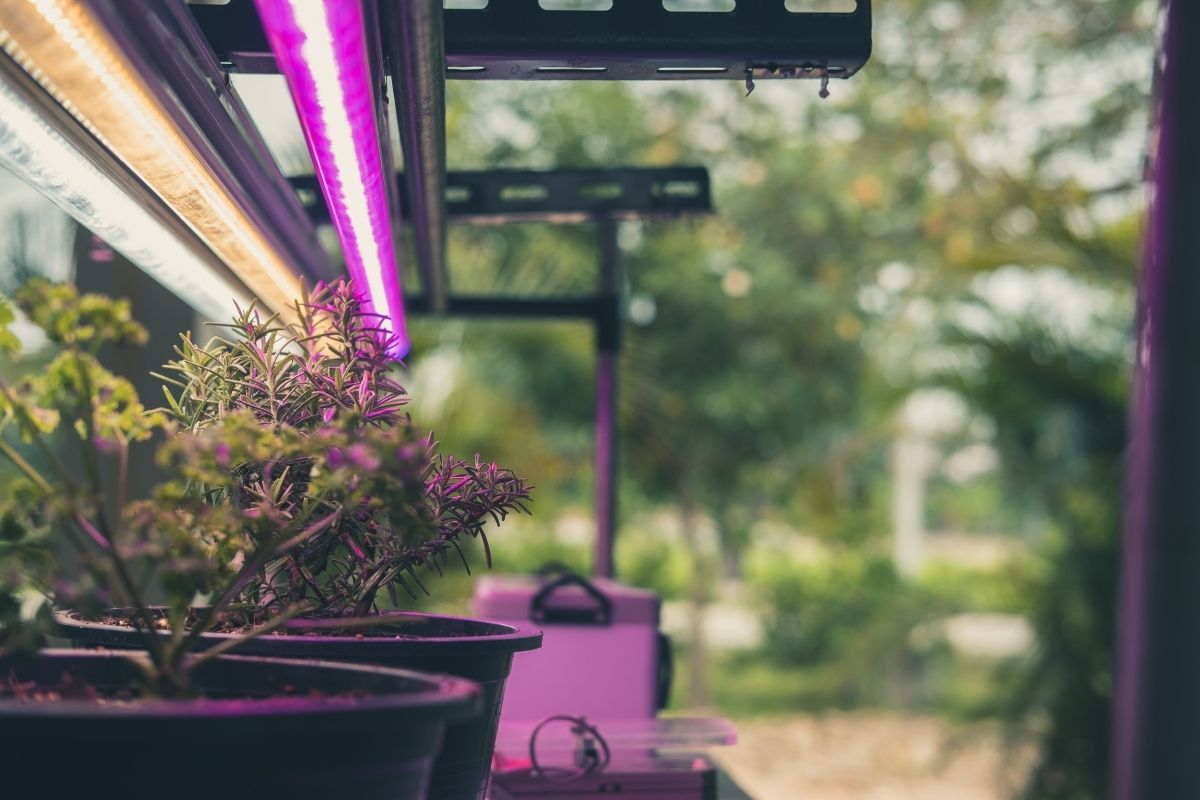
LED stands for light emitting diode, and they’re made with conductive material that gives off light when turned on. They can be made in different colors, including blue, red, and white (or full spectrum). The light emitting diodes, which are small conductors made of metal, emits light photons that plants can use for photosynthesis while putting off less heat than other types of bulbs. They’re a little more expensive to make and to purchase, but LED grow lights have a long lifetime and are more energy efficient.
advantages of led light
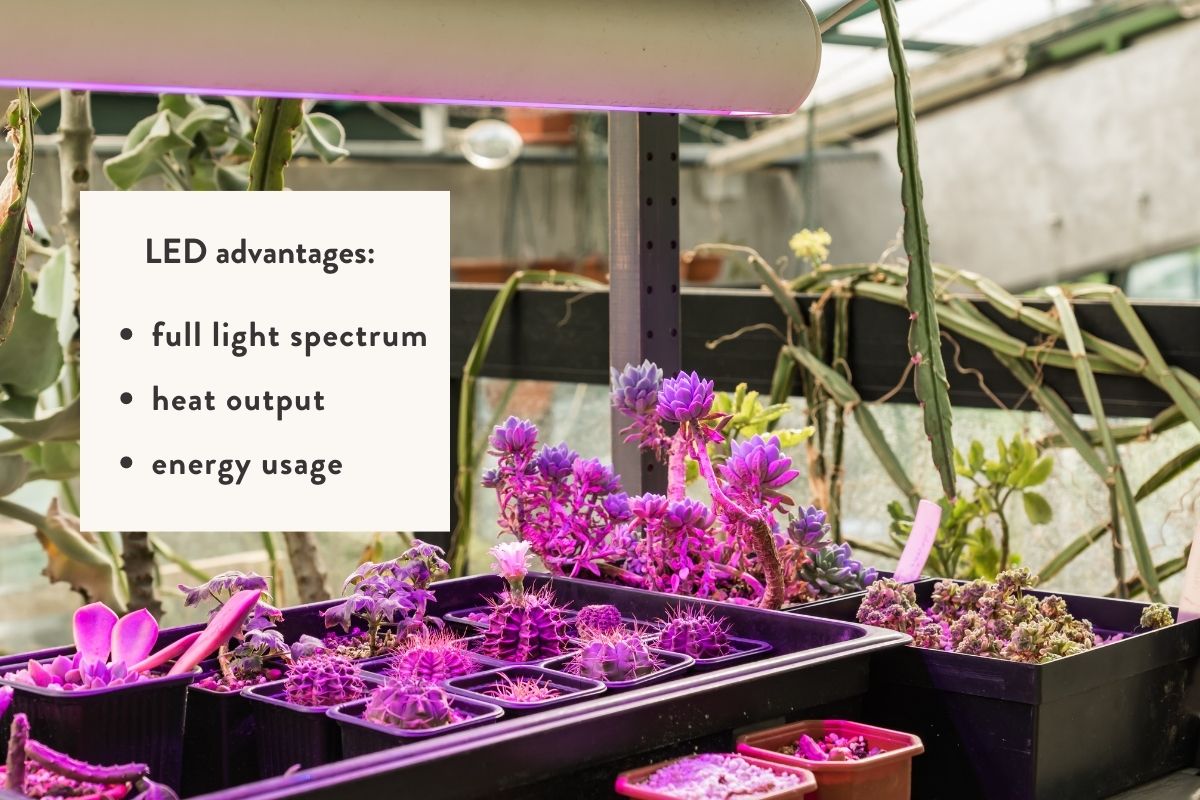
The high-tech nature of LED lights offers some benefits like high energy efficiency, less heat output, and variety in color. The range and long-term value LEDs offer have made them the most popular and most available type of grow light available today.
- full light spectrum. LEDs come in blue, red, and white light spectrums. The blue light helps with vegetative growth, and the red helps with flowering. White light contains the full spectrum of visible light, containing all of the color wavelengths, including both red and blue, and green as well. Some bulbs deliver UV light, from beyond the blue side of the spectrum, to low infrared wavelengths, just beyond red.
- energy usage. LEDs use much less energy than incandescent or fluorescent lighting systems because the diode material is more efficient with energy, being able to release light with less power input. This means it costs less to run an LED bulb than other kinds of lights, and you can run it for many years longer overall, most having over 50,000 hours of lifetime light to give.
- heat output. Since it takes less energy to run an LED bulb, and it’s more efficient with that energy than other bulbs, LEDs give off much less heat than incandescent or fluorescent bulbs. This is because the material LEDs are made to emit light rather than heat when turned on. This lets you be sure your bulbs aren’t heating up your growing space much at all, so you don’t have to do anything to compensate for extra heat.
disadvantages of led light

Despite the many positive features that LEDs offer, they have some disadvantages that might make it worth considering another option based on your situation. These include a higher price, drawbacks from blue light, and confusing tech specifications.
- upfront costs. The manufacture and materials needed for LEDs are specialized, so their high tech advantages come with a higher price. The technology’s durability and efficiency pay off over time, however, so the higher upfront cost may be worth the long-term value.
- blue light. One of the advantages of LEDs over incandescent bulbs is the ability to produce blue light, which contributes to the wider spectrum of light wavelengths that plants can use. Blue light, however, is a high frequency that can damage our eyes when it’s not balanced with other color wavelengths (which is why white light is less harsh to have on than blue or purple light.)
- confusing specs. As a newer technology, the LED industry is still working through developing production standards across companies. This means each manufacturer has their particular way of making their product, and brands will vary on the design of the panel, the wattage used, and the amount of light emitted. A little extra research will help you be sure of what you’re getting from a particular product when you’re browsing LED lights.
what are fluorescent grow lights?
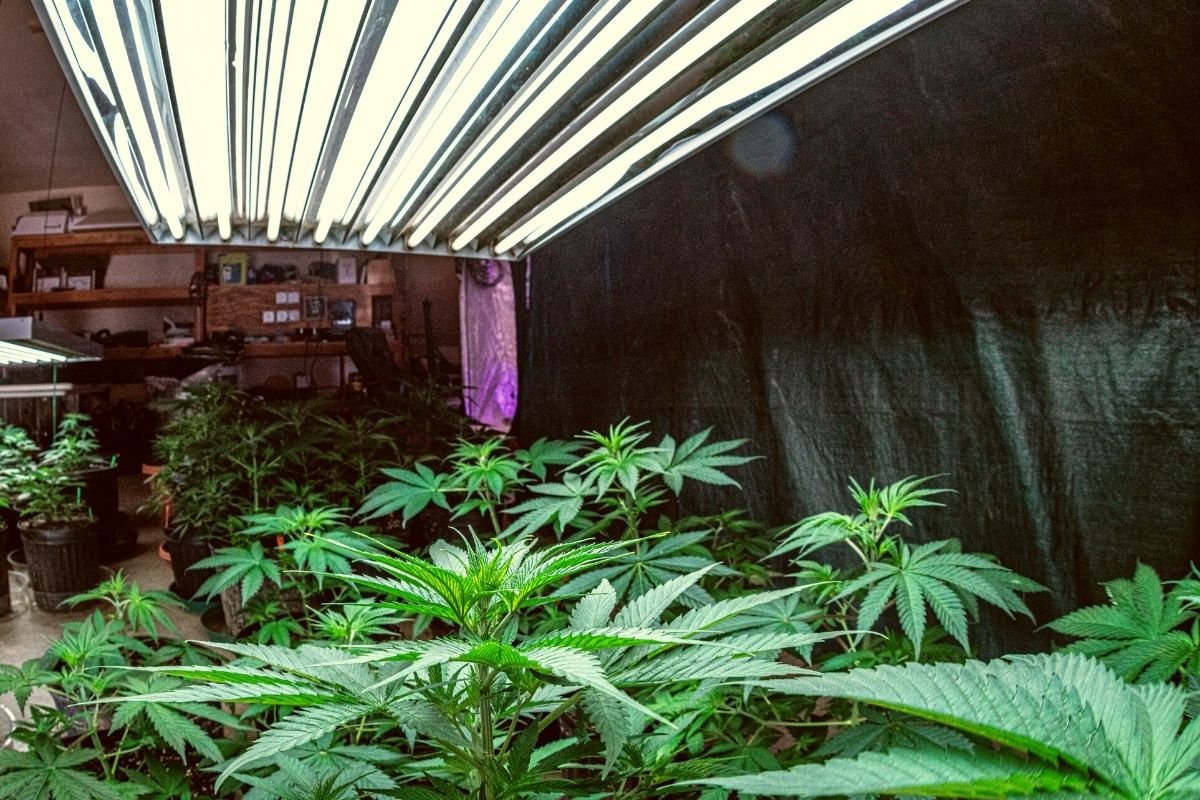
Fluorescent light bulbs are an older type of bulb than LED, but they’re a high performing technology in their own right. These bulbs are filled with low-pressure vaporized mercury gas that glows when the electric current passes through from end to end. Fluorescent grow lights are less expensive than LEDs, but they cost more to run, have shorter lifespans (albeit several years), and the materials used are more dangerous if a bulb is broken. That being said, they tend to take up less space than LED lamps and are easy to use.
advantages of fluorescent light
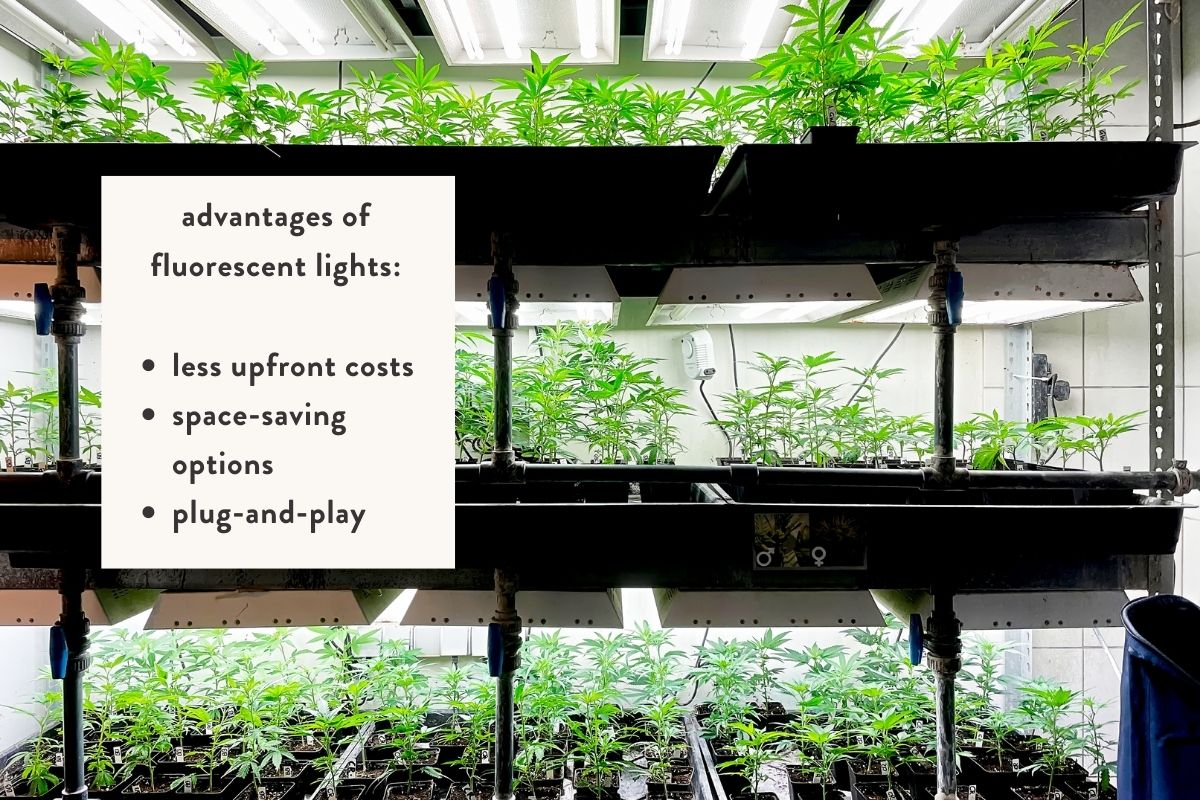
As an older technology, fluorescent bulbs are less widespread these days, but they’re still available and they’re less expensive to buy than an LED. Their simple design allows them to be lighter and less cumbersome than LED panels, and since the bulbs are changeable in fluorescent fixtures, they’re easier to manage.
- less upfront costs. While fluorescent bulbs are more expensive than incandescent bulbs to make because of the materials needed to produce them, they’re less expensive than LEDs. A fluorescent bulb has about 10,000 hours of light on average (compared to 1,000 hours for an incandescent bulb), so they won’t need to be changed for many years. This frees up some of your budget for other plant-related expenses!
- space-saving options. Fluorescent tube grow lights are long and thin, or compact like a normal lamp bulb, and usually have similarly thin or compact fixtures. This gives lots of vertical space for your plants to grow (but since they do give off some heat, be sure to adjust the height if or when your plants start reaching closer to the lamp!)
- Plug-and-play. Fluorescent bulbs are easily installed and replaced as necessary. They have been used for many years in permanent ceiling fixtures, and don’t need specialized panels to work.
disadvantages of fluorescent light
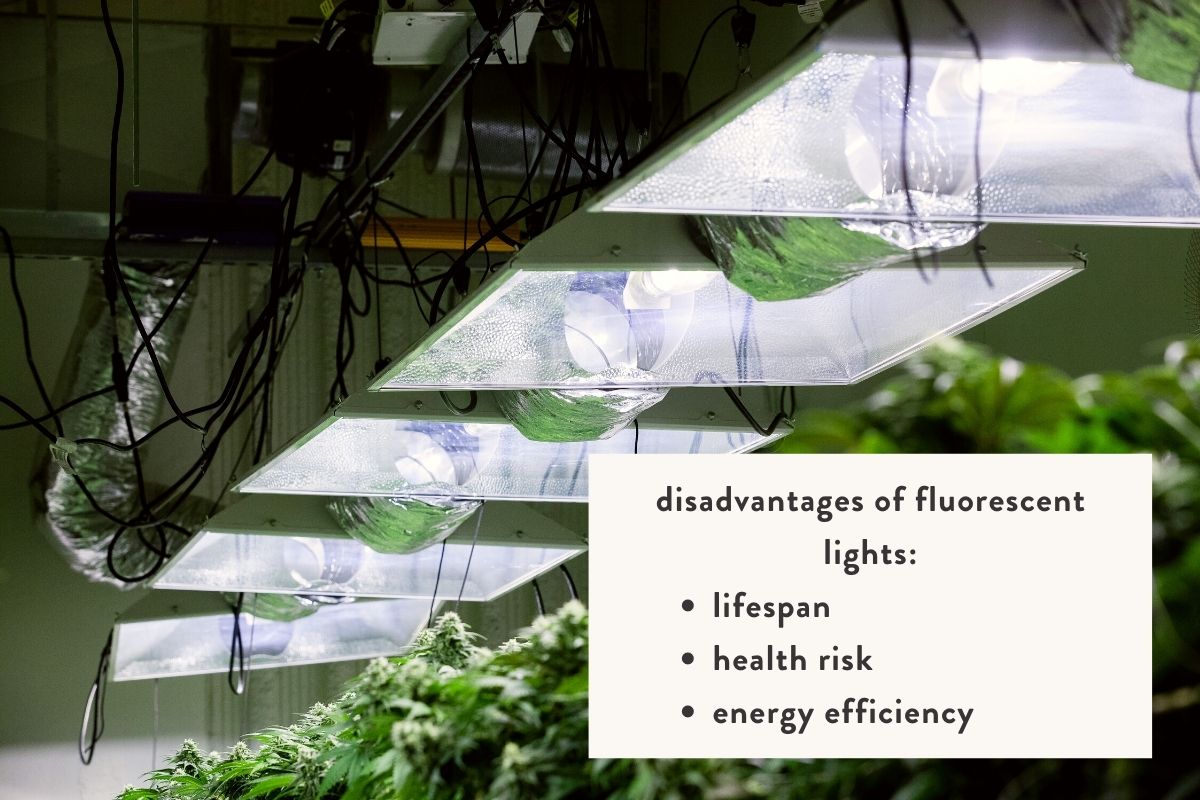
There are some disadvantages to fluorescent light bulbs that have led them to become less prevalent on the market, but nevertheless still widely available for their effectiveness otherwise. The downsides include a shorter lifespan than LEDs, lower energy efficiency, and potential health risks associated with the materials they’re made with.
- lifespan. A fluorescent bulb’s lifespan is less than an LED, but more than an incandescent bulb. It should last about 10,000 hours on average, so while it’s not the longest lasting, it’s also not the worst performing type of bulb in this category.
- health risk. The mercury gas used in fluorescent bulbs is safe when it’s contained in the bulb, but if one breaks, it might pose a safety risk. The gas amount in the bulb is very low, but shouldn’t be inhaled if a bulb breaks. The gas should quickly disperse with an open window, and glass shards should be cleaned up right away and handled with care.
- energy efficiency. Fluorescent lights are more efficient with energy use than incandescent bulbs, but less than LEDs. This means they draw a medium amount of power, and your energy bills will be higher to reflect it. Depending on your budget and setup, this may or may not make a big difference; more lights will be more costly to run than just a couple of bulbs.
head-to-head comparison: led vs fluorescent
Let’s take a look at the advantages and disadvantages of each type of bulb and see which might be better in one or another situation.
| Feature | Key Takeaway | Winner |
|---|---|---|
| Energy Efficiency | It takes more power to run a fluorescent bulb than it does an LED, so when it comes to energy efficiency, LEDs outshine fluorescent bulbs when compared against each other. | Energy Efficiency |
| Running Costs | Since it takes more energy to run a fluorescent grow lamp than an LED, fluorescent bulbs will cost more monthly, with the impact becoming more noticeable the more bulbs you have running at a time. | LED |
| Price Tag | When it comes to upfront costs, the fluorescent bulb is more accessible. LED panels can become very expensive the bigger and higher-end you go, while fluorescent bulbs don’t vary much between brands and designs. | Fluorescent |
| Spectral Range | While fluorescent bulbs do come in warm and white tones, they tend to have a bluish hue to them. LEDs, on the other hand, can give off true blue or true red colors, in addition to full spectrum white. | LED |
| Heat Output | LEDs give off little heat in comparison to fluorescents, which put out comparatively more heat. Both bulbs, however, give off much less heat than an incandescent bulb. | LED |
| Lifespan | The lifespan of your lightbulb may make a difference in which type you choose. LEDs last long, but are difficult (or unable) to change on their panel. Fluorescents don’t last as long as LEDs, but they’re easy to change when the time comes. | LED |
FAQ
will seeds germinate under led light?
Seeds will germinate under LED lights that are blue or full-spectrum. Seeds need the high energy light to grow because they can’t store any of it yet, and they can handle 24 hours a day of low-intensity, high wavelength light. Since LEDs don’t give off much heat at all, they can be just inches above seeds without risk of burning them.
how many hours of light do indoor plants need?
The amount of light any plant needs will depend on its species and its age. If you have a fiddle leaf fig, a dracaena, or a cactus, they like lots of natural light, up to 16 hours, while ZZ plants, pothos, and philodendrons can do with closer to 12 hours of light. For cannabis growers, young plants need more light (!6 hours) than adult plants (12 hours). Seeds of all kinds can take round-the-clock, low-intensity light from germination to seedling.
final thoughts: which light is best for you?
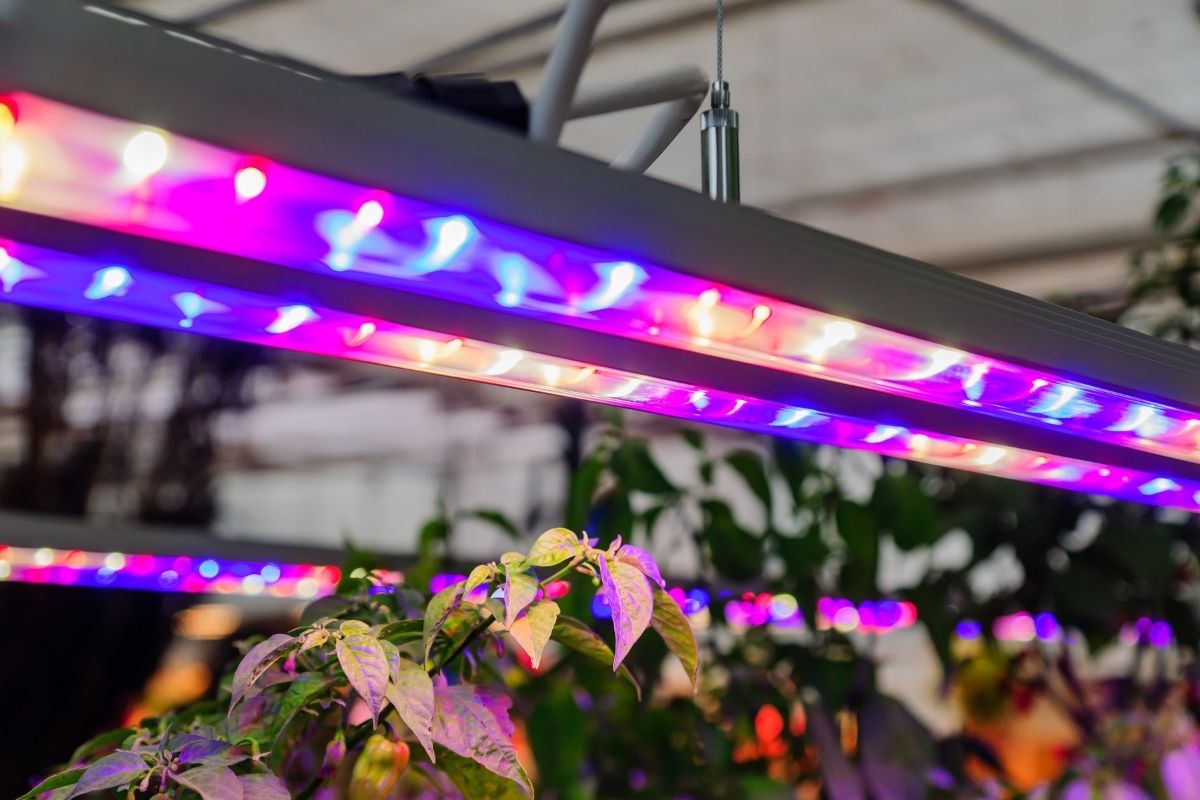
The right bulb for you will vary by your own setup and your budget: a supplemental light for houseplants might do fine with a fluorescent lamp, or a small indoor grow setup. Flowering indoor plants, however, might light the red light an LED can provide. Large grow setups might find LEDs more energy and cost efficient, but medium or smaller sized setups may prefer the flexibility and ease of fluorescent lamps. Every situation is unique, which is why it’s important to consider all your options before making a decision.
More about lighting
- How To Use Grow Lights For Indoor Plants
- 5 Best Grow Light Strips For Indoor Plants
- Our *hands on* MARS HYDRO TSW 2000 review (with photos)
- Understanding weed light cycles: Get the most from your harvest
- Indoor plant lighting guide: where to put your plants
- How close should grow lights be to plants?
- Best grow lights for seedlings: how to sprout your seedlings safely
- Guide: full-spectrum light for plants (+grow light spectrum chart)
- 10 best LED grow lights for indoor plants

